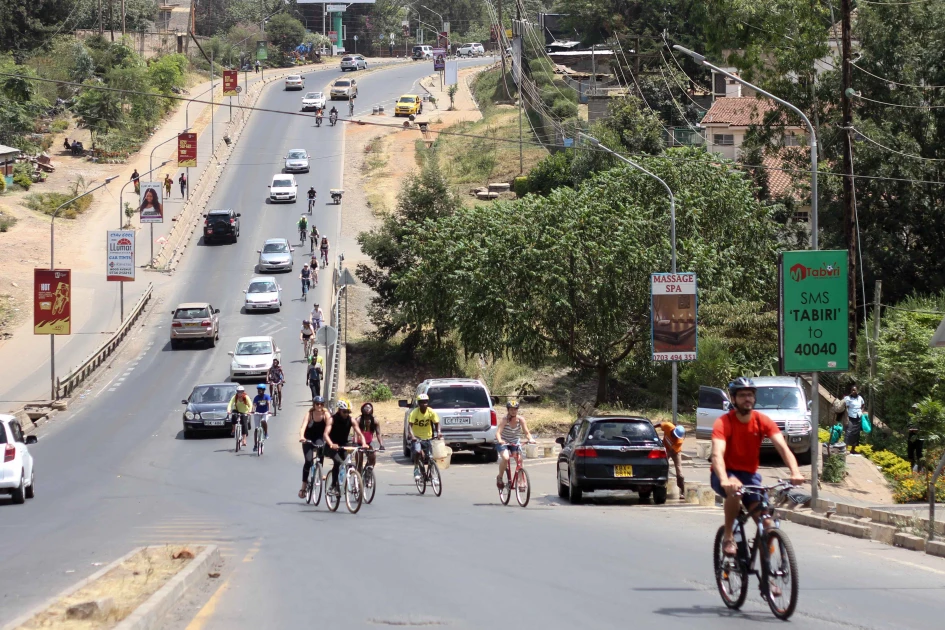Cycling in Nairobi: How difficult it is to peddle in the city

The parking rack spends most of its hours idle; counting human traffic as very few cyclists use it. It’s either cyclists have no idea it exists, or they fear losing their bikes to thieves.
The rack has been in operation since 2019 when the Nairobi county government joined hands with the UN-Habitat in a collaborative undertaking to give Luthuli Avenue, one of Nairobi’s most populous streets, a facelift.
But many people would rather leave their bikes with security guards known to them – at a small fee.
“There are times you will find a few bicycles parked here, but most of the time it’s unoccupied,” John Mingoch, a resident of Nairobi who regularly uses Luthuli Avenue told Wananchi Reporting.
According to Steve Omondi, a cycling enthusiast who has been cycling in Nairobi since 2012, the infrastructure in the capital and surrounding estates does not favour cycling.
“There is no proper infrastructure in place at the moment. This makes it very difficult to safely cycle from say Kasarani to Upper Hill,” notes Omondi.
Steve who also sells bicycles – besides operating a bicycle repair shop in Nairobi – told Wananchi Reporting that the existing infrastructure is not properly marked.
This makes cycling in Nairobi a very dangerous undertaking.
According to sports journalist and cycling enthusiast Sean Cardovillis, it all boils down to attitude of drivers on our roads.
“There is this attitude of ‘not giving way’ that has bedevilled our roads and our society. This needs to change,” notes Cardovillis who cycles to keep fit.
“The roads are in very bad condition, which makes cycling very difficult and dangerous. You will find motorists parking on cycling lanes, or traders selling goods on what are supposed to be cycling lanes. This happens because of lack of enforcement by the relevant authorities,” he adds.
Then there is the issue of security of cyclists.
Indeed, some cyclists who spoke to Wananchi Reporting pointed out the issue of insecurity – and rampart bicycle theft as a major problem.
“There are instances where people have lost their bicycles at the parking rack,” says Omondi.
Then there are those cyclists who have had their bicycles stolen from them while on the road cycling. Others have been mugged while out cycling on the streets.
“People have to choose where to cycle safely; you cannot just cycle on any street in Nairobi, alone. Truth is that there are places you cannot cycle alone,” says Cardovillis.
Innocent Wafula who works in the capital – and cycles to and from work daily – says the greatest challenge his ilk face is with regards to cycling lanes.
“Cycling in Nairobi can be very dangerous. Often we have to squeeze between speeding vehicles and motorcycles,” notes Wafula who hopes the cries of cyclists will be heard.
It is important to note that the street layouts in urban areas like Nairobi has focussed on motorized transportation with very little consideration to non-motorized modes of transport.
The transport planning of street layouts, in especially within Nairobi City, has not adequately taken care of non-motorized transport (NMT) such as walking and cycling.
A good example is the recently developed Waiyaki way; which has walkway or cycling lanes.
Want to send us a story? SMS to 25170 or WhatsApp 0743570000 or Submit on Citizen Digital or email wananchi@royalmedia.co.ke
Comments
No comments yet.


Leave a Comment